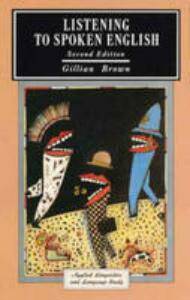
- Afhalen na 1 uur in een winkel met voorraad
- Gratis thuislevering in België vanaf € 30
- Ruim aanbod met 7 miljoen producten
- Afhalen na 1 uur in een winkel met voorraad
- Gratis thuislevering in België vanaf € 30
- Ruim aanbod met 7 miljoen producten
Zoeken
Omschrijving
For those who are familiar with the first edition, it will be convenient to have some indication of where the main changes lie. Chapter one has been largely rewritten to give an outline of current approaches to a model of comprehension of spoken language. Chapter two has a new initial section but otherwise remains as it was. Chapter three incorporates a new section on pause and how this interacts with rhythm, and rather more on the function of stress. Chapter four has an extended initial section but otherwise remains largely as it was. Chapter five on intonation contains several sections which have been rewritten to varying extents. Chapter six of the first edition has disappeared: in 1977, very little work had been published on fillers and it seemed worthwhile incorporating a chapter that sat rather oddly with the phonetic/phonological interests of the rest of the book. Not that there is a great industry of descriptions of the forms and functions of these and similar phenomena there seems no reason to retain this early but admittedly primitive account. The chapter on paralinguistic vocal features, now chapter six, has some rewriting in the early part but considerable rewriting in the last sections. The final chapter on teaching listening comprehension has grown greatly in length. It still incorporates some material from the original chapter but most of it is completely rewritten.
Specificaties
Betrokkenen
- Auteur(s):
- Uitgeverij:
Inhoud
- Aantal bladzijden:
- 192
- Taal:
- Engels
- Reeks:
Eigenschappen
- Productcode (EAN):
- 9780582052970
- Verschijningsdatum:
- 9/07/1990
- Uitvoering:
- Paperback
- Formaat:
- Trade paperback (VS)
- Afmetingen:
- 140 mm x 216 mm
- Gewicht:
- 231 g

Alleen bij Standaard Boekhandel
+ 204 punten op je klantenkaart van Standaard Boekhandel
Beoordelingen
We publiceren alleen reviews die voldoen aan de voorwaarden voor reviews. Bekijk onze voorwaarden voor reviews.











